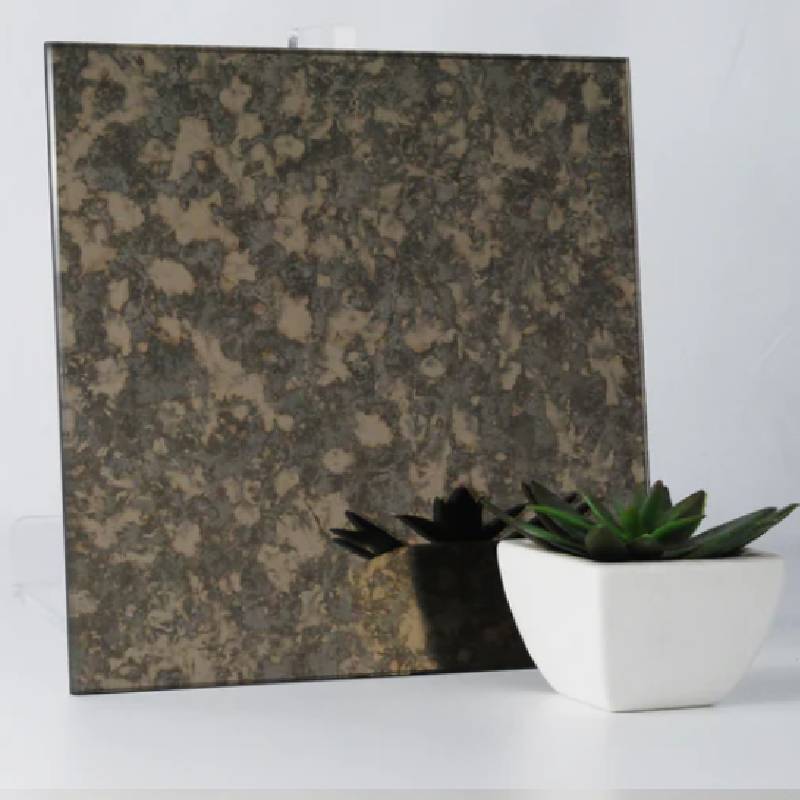Reflective Glass Colors The Spectrum of Innovation in Modern Design
In recent years, reflective glass has emerged as a popular choice in architecture and interior design. This innovative material not only enhances the aesthetic appeal of structures but also plays a crucial role in energy efficiency and sustainability. The variety of colors available in reflective glass has widened its application, enabling architects and designers to push the boundaries of creativity. This article will delve into the significance of reflective glass colors, their impact on modern design, and the technological advancements that have made these vibrant options possible.
Reflective glass is characterized by a metallic coating that reflects light while allowing varying degrees of visibility. The colors of reflective glass range from subtle hues like bronze and silver to more vibrant options such as blue, green, and even black. Each color offers unique qualities that can influence the ambiance of a space and the perception of the surrounding environment. For instance, blue reflective glass can evoke feelings of calmness and serenity, making it ideal for applications in healthcare facilities or wellness centers. In contrast, green reflective glass can harmonize with natural surroundings, making it a favored choice for eco-friendly structures.
The use of color in reflective glass also serves a practical purpose. The right tint can help reduce glare and control the amount of heat that enters a building. For example, darker shades, such as black or dark blue, tend to absorb more heat while reflecting sunlight, which can help regulate indoor temperatures and reduce the reliance on air conditioning. This not only cuts energy costs but also contributes to a building's overall sustainability, aligning with contemporary design philosophies that prioritize environmental responsibility.
Moreover, reflective glass colors can significantly impact a building's energy efficiency ratings. Many architects incorporate various shades of reflective glass to enhance a building’s thermal performance. By selecting the appropriate hue, designers can minimize heat gain during summer months, thus reducing the energy expenditure on cooling systems. This is particularly beneficial in urban environments where heat islands are prevalent. The integration of reflective glass, therefore, represents a proactive approach to climate change and urban sustainability.
reflective glass colors
Incorporating reflective glass into design also opens up new avenues for artistic expression. The interplay of colors can create stunning visual effects, especially when combined with innovative lighting solutions. For instance, during the day, reflective glass can produce captivating reflections of the sky and surrounding architecture that change with the position of the sun. At night, illuminated designs can transform the glass surface into a vibrant canvas, showcasing the creativity of the designer and the possibilities inherent in this material.
Technological advancements have played a vital role in expanding the color palette of reflective glass. State-of-the-art manufacturing techniques enable the creation of coatings that are not only durable and resistant to fading but also exhibit unique visual characteristics. These innovations allow for more precise control over the color outcomes and reflective qualities. As a result, designers can achieve specific aesthetics while ensuring that the glass maintains its functional advantages.
Furthermore, the availability of customizable options has made reflective glass even more appealing to architects. Companies are now offering bespoke solutions that allow designers to tailor the color and reflective properties to fit individual projects. This customization fosters a collaborative approach between glass manufacturers and architects, resulting in innovative designs that meet specific needs and preferences.
In conclusion, the spectrum of reflective glass colors represents a significant advancement in modern design practices. Combining functionality with artistic expression, reflective glass offers architects an opportunity to create sustainable, energy-efficient, and visually striking structures. As technology continues to evolve, the potential for reflective glass to revolutionize design remains immense. The dialogue between color, light, and space will undoubtedly drive future innovations, making reflective glass an integral component of contemporary architecture and design. Understanding and harnessing the power of color in reflective glass will not only enhance aesthetic appeal but also contribute to a more sustainable and harmonized built environment.
 Afrikaans
Afrikaans  Albanian
Albanian  Amharic
Amharic  Arabic
Arabic  Armenian
Armenian  Azerbaijani
Azerbaijani  Basque
Basque  Belarusian
Belarusian  Bengali
Bengali  Bosnian
Bosnian  Bulgarian
Bulgarian  Catalan
Catalan  Cebuano
Cebuano  Corsican
Corsican  Croatian
Croatian  Czech
Czech  Danish
Danish  Dutch
Dutch  English
English  Esperanto
Esperanto  Estonian
Estonian  Finnish
Finnish  French
French  Frisian
Frisian  Galician
Galician  Georgian
Georgian  German
German  Greek
Greek  Gujarati
Gujarati  Haitian Creole
Haitian Creole  hausa
hausa  hawaiian
hawaiian  Hebrew
Hebrew  Hindi
Hindi  Miao
Miao  Hungarian
Hungarian  Icelandic
Icelandic  igbo
igbo  Indonesian
Indonesian  irish
irish  Italian
Italian  Japanese
Japanese  Javanese
Javanese  Kannada
Kannada  kazakh
kazakh  Khmer
Khmer  Rwandese
Rwandese  Korean
Korean  Kurdish
Kurdish  Kyrgyz
Kyrgyz  Lao
Lao  Latin
Latin  Latvian
Latvian  Lithuanian
Lithuanian  Luxembourgish
Luxembourgish  Macedonian
Macedonian  Malgashi
Malgashi  Malay
Malay  Malayalam
Malayalam  Maltese
Maltese  Maori
Maori  Marathi
Marathi  Mongolian
Mongolian  Myanmar
Myanmar  Nepali
Nepali  Norwegian
Norwegian  Norwegian
Norwegian  Occitan
Occitan  Pashto
Pashto  Persian
Persian  Polish
Polish  Portuguese
Portuguese  Punjabi
Punjabi  Romanian
Romanian  Russian
Russian  Samoan
Samoan  Scottish Gaelic
Scottish Gaelic  Serbian
Serbian  Sesotho
Sesotho  Shona
Shona  Sindhi
Sindhi  Sinhala
Sinhala  Slovak
Slovak  Slovenian
Slovenian  Somali
Somali  Spanish
Spanish  Sundanese
Sundanese  Swahili
Swahili  Swedish
Swedish  Tagalog
Tagalog  Tajik
Tajik  Tamil
Tamil  Tatar
Tatar  Telugu
Telugu  Thai
Thai  Turkish
Turkish  Turkmen
Turkmen  Ukrainian
Ukrainian  Urdu
Urdu  Uighur
Uighur  Uzbek
Uzbek  Vietnamese
Vietnamese  Welsh
Welsh  Bantu
Bantu  Yiddish
Yiddish  Yoruba
Yoruba  Zulu
Zulu 

